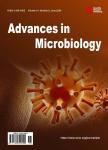Antibacterial Effect of Aqueous Extracts and Bioactive Chemical Compounds of <i>Coffea canephora</i>against Microorganisms Involved in Dental Caries and Periodontal Disease
Antibacterial Effect of Aqueous Extracts and Bioactive Chemical Compounds of <i>Coffea canephora</i>against Microorganisms Involved in Dental Caries and Periodontal Disease作者机构:Departamento de Pós-Graduacao Mestrado Profissional em Odontologia Faculdade de Odontologia Universidade Veiga de Almeida Rio de Janeiro Brasil Departamento de Ciência Básica Universidade Federal Fluminense Nova Friburgo Brasil Departamento de Microbiologia Médica Instituto de Microbiologia Universidade Federal do Rio de Janeiro Rio de Janeiro Brasil Instituto de Nutricao Universidade Federal do Rio de Janeiro Rio de Janeiro Brasil Departamento de Odontopediatria e Ortodontia Faculdade de Odontologia Universidade Federal do Rio de Janeiro Rio de Janeiro Brasil
出 版 物:《Advances in Microbiology》 (微生物学(英文))
年 卷 期:2014年第4卷第14期
页 面:978-985页
学科分类:1008[医学-中药学(可授医学、理学学位)] 1006[医学-中西医结合] 100602[医学-中西医结合临床] 10[医学]
主 题:Oral Pathogens Dental Caries Periodontal Disease Coffee Trigonelline Chorogenic Acid
摘 要:This study aimed to evaluate the Minimum Inhibitory Concentration (MIC) and Minimum Bactericidal Concentration (MBC) of Coffea canephora aqueous extract (Cc), trigonelline (Tg) and 5-caffeoylquinic acid (5-CQA) against cariogenic microorganisms: Streptococcus parasanguinis ATCC 903 (SP), Lactobacillus rhamnosus ATCC 9595 (LR);and pathogens related to periodontal disease: Porphyromonas gingivalis ATCC 33277 (PG), Fusobacterium nucleatum ATCC 25586 (FN), Prevotella intermedia ATCC 49046 (PI) and Prevotella nigrescens ATCC 33563 (PN). Different concentrations of Cc (0.15625 to 10 mg/mL), Tg and 5-CQA (0.005 to 10.24 mg/mL) were tested. Chlorhexidine (0.05%) was used as positive control and the substances without the inoculum comprised the blank control. The Cc showed bacteriostatic action against SP (MIC = 5 mg/mL) and LR (MIC = 10 mg/mL). Tg showed bacteriostatic action against SP (MIC = 2.56 to 1.28 mg/mL), LR (MIC = 2.56 mg/mL), PG (MIC = 2.56 to 1.28 mg/mL), FN (MIC = 5.12 mg/mL), PN (MIC = 2.56 mg/mL), and PI (MIC = 2.56 to 1.28 mg/mL). Also, Tg showed bactericide properties against SP (MBC = 2.56 mg/mL), PG (MBC = 2.56 mg/mL), FN (MBC = 10.24 mg/mL), PN (MBC = 5.12 mg/mL), and PI (MBC = 2.56 mg/mL). Although 5-CQA has previously shown activity against Streptococcus mutans, in the present study, it showed no activity against all tested microorganisms. C. canephora extract only showed antibacterial activity against cariogenic microorganisms, not presenting action against periodontal pathogens. It was concluded that trigonelline presented the best effect against all pathogens tested, therefore coffee extracts with higher trigonelline content should be tested against these specific pathogens.



